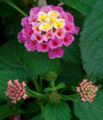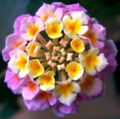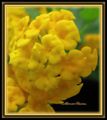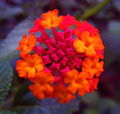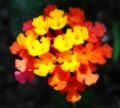Lantana
Lantana {{{latin_name}}}
|
Lantana
| ||||||||||||||||||||||||||||||||||||||||
|---|---|---|---|---|---|---|---|---|---|---|---|---|---|---|---|---|---|---|---|---|---|---|---|---|---|---|---|---|---|---|---|---|---|---|---|---|---|---|---|---|---|
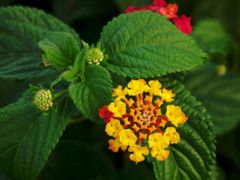
|
|
| |||||||||||||||||||||||||||||||||||||||
| |||||||||||||||||||||||||||||||||||||||||
Popular garden plant due to the long bloom season, which is year-round in frost-free climates. Light frosts just kill some of the tender growth, while heavy freezes (*Sunset zones 8-10, 14, 29, 30) can seriously damage or kill the plants. In other colder zones, they can be grown as annuals.
L. montevidensis is one of the most popular species, which you'll find at the nurseries, though most are simply sold as "Lantana" or the cultivar name. Branches can trail 3-6 feet (1-2m), with dark green coarsely toothed leaves, which can take on a reddish/purple hue, especially from cold. These come in purple, white, pink, mixes of red/orange/yellow, etc. The variety is also used to create hybrids.
Crushed leaves give off a strong scent that some people don't like.
Cultivation

| Lantana calendar? | ||
|---|---|---|
| January: | ||
| February: | ||
| March: | ||
| April: | ||
| May: | ||
| June: | ||
| July: | ||
| August: | ||
| September: | ||
| October: | ||
| November: | ||
| December: | ||
| Notes: | ||
A hard pruning is very useful in the spring to remove dead wood and prevent woodiness. Requires little or no fertilizing, over fertilizing or water reduces flowering.
Shrub types used like annuals are good in beds, containers, as low hedges or as foundation shrubs.
Spreading types make great groundcover, including on slopes, where they'll work to prevent erosion. These also look good growing over the sides of containers, raised beds, pots, or hanging baskets.
Propagation
Root semi-ripe cuttings in the summer, or plant seeds at 61-64F (16-18C) in the spring.
Pests and diseases
Mildew can be a problem in shade, or during longer periods of overcast weather. Can also be susceptible to whiteflies, spider mites, rust, virus disease, root knot nematodes, stem rot, and leaf spot.
Species
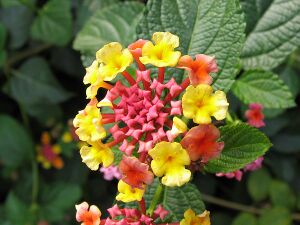
Lantana is a genus of about 150 species. This list contains some of the better known species.
- Lantana camara (syn. L. aculeata, L. armata) – Spanish Flag)
- Lantana involucrata
- Lantana involucrata var. socorrensis
- Lantana lilacina Desf.
- Lantana microphylla L.
- Lantana montevidensis – Trailing Lantana
- Lantana pastazensis
- Lantana rugosa
- Lantana rugulosa
- Lantana tiliifolia
- Lantana trifolia L.
- Lantana urticoides – Texas Lantana
- Lantana velutina Mart. & Gal. – Velvet Lantana
Gallery
-
Ripe (dark) and unripe (green) lantana berries
-
Lantana involucrata with fruit
References
- w:Lantana. Some of the material on this page may be from Wikipedia, under the Creative Commons license.
- Lantana QR Code (Size 50, 100, 200, 500)
- Sunset National Garden Book. Sunset Books, Inc., 1997. ISBN 0376038608





